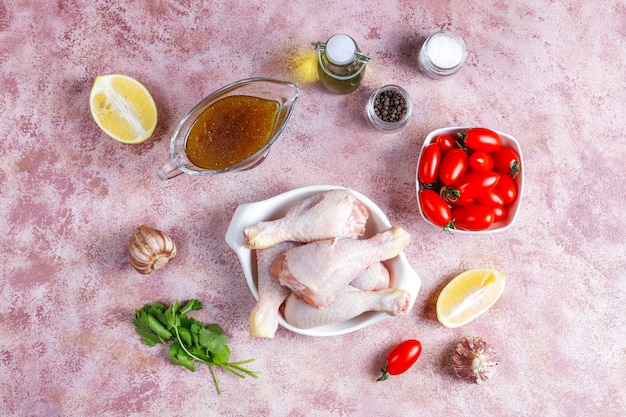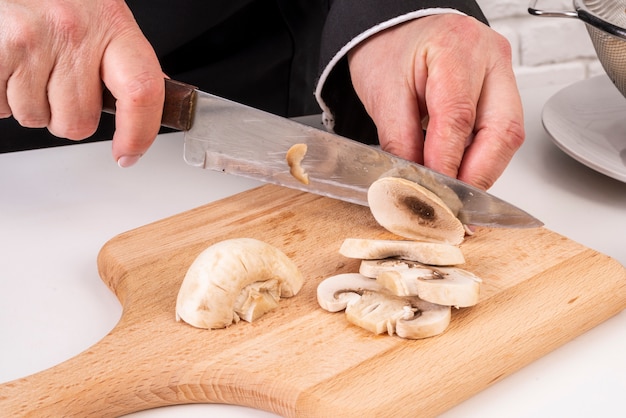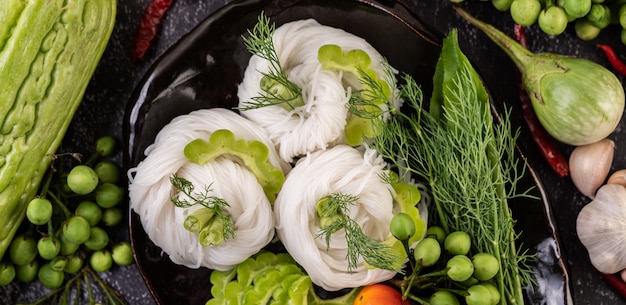I’ve been a devoted scallop enthusiast for years, and there’s nothing quite like the satisfaction of nailing a perfectly pan-seared scallop. That golden-brown crust, the sweet and juicy flesh – it’s pure culinary bliss. But, let’s be honest, mastering this technique isn’t always a breeze. There are a few crucial things you need to know to make those scallops sing. This is your ultimate guide to achieving pan-seared perfection, with all the tips, tricks, and personal insights you need to make a delicious masterpiece.
(Part 1) Choosing the Right Scallops

Freshness is King
Scallops are at their best when they’re fresh. So, how can you tell if you’ve got a good batch? Look for scallops that are firm and plump, with a healthy pearly sheen. Avoid anything that looks dry, limp, or has an off-putting smell. Remember, your nose is your best friend when it comes to judging freshness. A slight, briny aroma is fine, but anything too fishy is a red flag.
Navigating the Scallop World
There’s a whole world of scallops out there, each with its own distinct personality:
- bay scallops: These are the little darlings of the scallop family, small and delicate with a sweet, almost buttery flavour. They’re perfect for quick cooking methods like pan-searing, where their delicate texture shines. Think of them as the delicate, charming friend you’d bring to a cocktail party.
- sea scallops: These are the big, bold characters of the scallop world. They have a more robust flavour and a chewier texture that stands up well to longer cooking times. They're fantastic for grilling, baking, or even roasting. Consider them the life of the party, ready for a good time.
- dry scallops: Also known as "dry-packed," these scallops have a higher muscle content and a firmer, chewier texture. They're usually favoured for sushi or sashimi, where their distinct texture adds a different dimension to the dish. Picture them as the reliable friend who always brings the snacks.
- wet scallops: These are often labelled "wet-packed" and have a lower muscle content. They're usually soaked in a solution to maintain moisture, which can sometimes impact their flavour. They're not necessarily bad, but I personally tend to favour dry scallops for their superior texture. Think of them as the friendly acquaintance who’s always a bit too eager to please.
Get Expert Advice
Don’t be afraid to ask for help! If you’re unsure about which type of scallop is right for you, your local fishmonger is your best resource. They'll be able to recommend the perfect variety for your recipe and tell you what’s freshest in season.
(Part 2) Prepping Your Scallops

A Little Cleaning Goes a Long Way
If you’ve ever found yourself chewing on a tough, rubbery piece of something while trying to enjoy your scallops, you’ve probably encountered the scallop muscle, also known as the “foot.” This little fella can be a bit of a texture nightmare, so it’s best to remove it before cooking.
The removal process is pretty straightforward. Use a sharp knife or a pair of kitchen shears to gently grab the foot and pull it away from the scallop. It should come off easily, leaving you with a nice, clean scallop.
Dry, Dry, Dry!
Scallops don’t like being wet. Patting them dry with paper towels is essential to ensure a beautiful sear. Excess moisture can lead to steaming instead of searing, resulting in a pale, soggy scallop. Not the kind of scallop we want!
(Part 3) Seasoning Your Scallops

Keep it Simple, Keep it Delicious
Scallops are a delicate ingredient, and they don't need a lot of fuss to shine. A sprinkle of salt and pepper is usually all you need to let their natural flavour sing. Think of it like a beautiful melody – a few key notes are all it takes to make a memorable song.
Citrus Magic
A touch of citrus zest can elevate your scallops to a whole new level. I love the brightness that lemon or lime zest adds, creating a beautiful harmony of flavours.
Herbs for the Win
Chopped fresh herbs, like parsley, thyme, or chives, add a lovely fragrance and freshness to your dish. Imagine them as the chorus of your scallop symphony, adding depth and complexity to the overall experience.
(Part 4) Pan-Searing Your Scallops
The Right Equipment is Key
A good pan is crucial for achieving the perfect sear. A cast-iron pan is my go-to, as it heats evenly and retains heat well, creating a consistent, beautiful sear. But if you don’t have one, a heavy-bottomed stainless steel pan will do the trick.
Heat It Up!
Before you even think about putting those scallops in the pan, make sure it’s screaming hot. The pan should be sizzling when you add the scallops. If you don’t feel the heat, it’s not hot enough!
The Oil Whisperer
A tablespoon or two of neutral oil, like grapeseed or avocado oil, is all you need. These oils have high smoke points, meaning they can handle the high heat without burning.
Don’t Crowd the Party
Give your scallops some breathing room! Crowding the pan will hinder the searing process, leading to unevenly cooked scallops. Cook them in batches if necessary, giving each scallop a chance to shine.
The Art of the Sear
Now, for the moment of truth. Place those scallops in the hot pan and let them cook undisturbed for 2-3 minutes per side. This will create the gorgeous, golden-brown crust we're aiming for.
The Flip: A Crucial Moment
Don’t be afraid to flip those scallops! You’ll know it’s time when the bottom side has achieved a beautiful brown crust. My secret weapon for flipping is a pair of tongs. They gently lift the scallops without breaking them, ensuring a perfect sear on both sides.
Cooking to Perfection
Once flipped, the scallops will need about 1-2 minutes on the second side. Remember, you’re the boss! Cook them to your desired level of doneness. If you prefer them slightly rare, cook them for a shorter amount of time. If you like a bit more done, cook them for a bit longer.
The doneness test
To check if those scallops are ready, use a toothpick or a sharp knife to gently pierce the thickest part of the scallop. It should be opaque and no longer translucent. This is your cue to move on to the next stage.
(Part 5) Resting Your Scallops
Patience, My Friend
After your scallops have reached their peak of perfection, remove them from the pan and let them rest for a few minutes before serving. This allows the juices to redistribute throughout the scallop, resulting in a more tender and flavourful bite.
Resist the Urge
I know, it’s tempting to dive in right away, but trust me, those precious few minutes are worth it. The scallops will thank you for it.
(Part 6) Serving Your Scallops
Simple Elegance
Scallops are a luxurious ingredient that don’t need much adornment to shine. Let their natural flavour and beautiful texture take centre stage.
Adding a Touch of Finesse
A little acidity can take your scallops to the next level. A squeeze of lemon or a drizzle of balsamic vinegar adds a touch of brightness. A sprinkle of chopped herbs, a pinch of flaky salt, or a dollop of creamy sauce can create a beautiful, harmonious blend of flavours.
(Part 7) scallop recipe Ideas
Here are a few of my favourite scallop recipes to get you started on your culinary journey:
Pan-Seared Scallops with Lemon Butter Sauce
- Ingredients: 1 pound sea scallops, 2 tablespoons butter, 1 tablespoon olive oil, 1/4 cup dry white wine, 1/4 cup lemon juice, 1 tablespoon chopped fresh parsley, salt and pepper to taste
- Instructions: Clean and pat dry the scallops. Heat the butter and olive oil in a large skillet over medium-high heat. Season the scallops with salt and pepper and sear for 2-3 minutes per side. Remove the scallops from the pan and set aside. Add the white wine and lemon juice to the pan and bring to a simmer. Reduce the sauce for a few minutes until it thickens slightly. Stir in the parsley and return the scallops to the pan to warm through. Serve immediately.
Scallops with Garlic and Chili
- Ingredients: 1 pound bay scallops, 2 tablespoons olive oil, 2 cloves garlic, minced, 1/2 teaspoon red pepper flakes, salt and pepper to taste, 1/4 cup chopped fresh cilantro
- Instructions: Clean and pat dry the scallops. Heat the olive oil in a large skillet over medium-high heat. Add the garlic and red pepper flakes and cook for 30 seconds. Season the scallops with salt and pepper and add them to the pan. Cook for 2-3 minutes per side, or until cooked through. Garnish with cilantro and serve immediately.
grilled scallops with Mango Salsa
- Ingredients: 1 pound sea scallops, 1 ripe mango, diced, 1/2 red onion, diced, 1/4 cup chopped fresh cilantro, 1 tablespoon lime juice, 1 tablespoon olive oil, salt and pepper to taste
- Instructions: Clean and pat dry the scallops. Combine the mango, red onion, cilantro, lime juice, olive oil, salt, and pepper in a bowl and toss to combine. Heat a grill pan over medium-high heat. Season the scallops with salt and pepper and grill for 2-3 minutes per side, or until cooked through. Serve the scallops with the mango salsa.
(Part 8) Frequently Asked Questions
What’s the Best Way to Store Scallops?
If you’re not ready to cook your scallops right away, store them in the refrigerator for no longer than 24 hours. Wrap them tightly in plastic wrap or place them in an airtight container.
Can I Freeze Scallops?
Absolutely! Wrap them tightly in freezer-safe plastic wrap or place them in a freezer-safe bag, squeezing out all the air. frozen scallops can last up to 3 months in the freezer.
How Do I Know When Scallops Are Done?
Cooked scallops will be opaque and no longer translucent. You can also use a toothpick or a sharp knife to check. The centre should be opaque, not translucent.
How Long Do I Cook Scallops?
The cooking time for scallops will depend on their size and type. Generally, they'll need 2-3 minutes per side. Always check for doneness with a toothpick or sharp knife.
What Can I Serve With Scallops?
Scallops are incredibly versatile and can be served with a variety of dishes. They're a wonderful complement to pasta, rice, vegetables, and salads. They also stand proudly on their own, served with a simple sauce.
There you have it! My complete guide to achieving pan-seared scallop perfection. With a bit of care and attention, you can create a dish that is truly exquisite. So go on, give it a try. I promise, you won't be disappointed.
Everyone is watching

Corn on the Cob: The Ultimate Guide to Perfectly Cooked Ears
Healthy MealsAh, corn on the cob. Just the name evokes images of sunny days, barbecues, and that sweet, juicy flavour that ...

Perfect Pork Roast Oven Cooking Time: A Guide to Delicious Results
Healthy MealsThere's something truly satisfying about a perfectly roasted pork. The aroma alone is enough to make your mout...

Ham Cooking Time: How Long to Bake, Smoke, or Boil a Delicious Ham
Healthy MealsAh, ham. It's a classic, isn't it? A real crowd-pleaser, especially around holidays. And when done right, it'...

Scallops: The Ultimate Guide to Perfect Cooking
Healthy MealsAh, scallops. Those delicate, sweet, and utterly delicious morsels of the sea. They hold a special place in my...

Spaghetti Squash: The Ultimate Guide to Cooking and Serving
Healthy MealsRemember that time you saw spaghetti squash at the supermarket, looking all bumpy and strange, and thought, "W...
